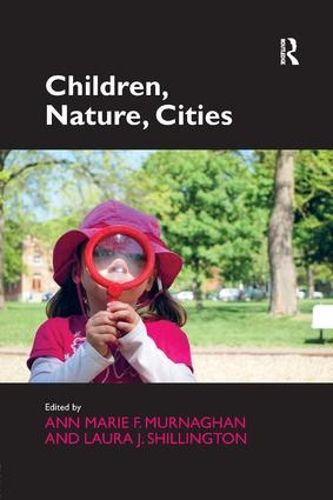Readings Newsletter
Become a Readings Member to make your shopping experience even easier.
Sign in or sign up for free!
You’re not far away from qualifying for FREE standard shipping within Australia
You’ve qualified for FREE standard shipping within Australia
The cart is loading…






Why does the way we think about urban children and urban nature matter? This volume explores how dichotomies between nature/culture, rural/urban, and child/adult have structured our understandings about the place of children and nature in the city. By placing children and youth at the center of re-theorising the city as a socio-natural space, the book illustrates how children and youth’s relations to and with nature can change adultist perspectives and help create more ecologically and socially just cities. As a key contribution to children’s studies, the book engages and enlivens debates in urban political ecology and urban theory, which have not yet treated age as an important axis of difference. With examples from ten localities, the chapters in this volume ask how we can subvert both romanticized and modernist conceptualizations of nature and childhood that conflate innocence and purity with children and nature; the volume asks what happens when we re-invent urban natures with children’s needs and perspectives in mind.
$9.00 standard shipping within Australia
FREE standard shipping within Australia for orders over $100.00
Express & International shipping calculated at checkout
Why does the way we think about urban children and urban nature matter? This volume explores how dichotomies between nature/culture, rural/urban, and child/adult have structured our understandings about the place of children and nature in the city. By placing children and youth at the center of re-theorising the city as a socio-natural space, the book illustrates how children and youth’s relations to and with nature can change adultist perspectives and help create more ecologically and socially just cities. As a key contribution to children’s studies, the book engages and enlivens debates in urban political ecology and urban theory, which have not yet treated age as an important axis of difference. With examples from ten localities, the chapters in this volume ask how we can subvert both romanticized and modernist conceptualizations of nature and childhood that conflate innocence and purity with children and nature; the volume asks what happens when we re-invent urban natures with children’s needs and perspectives in mind.